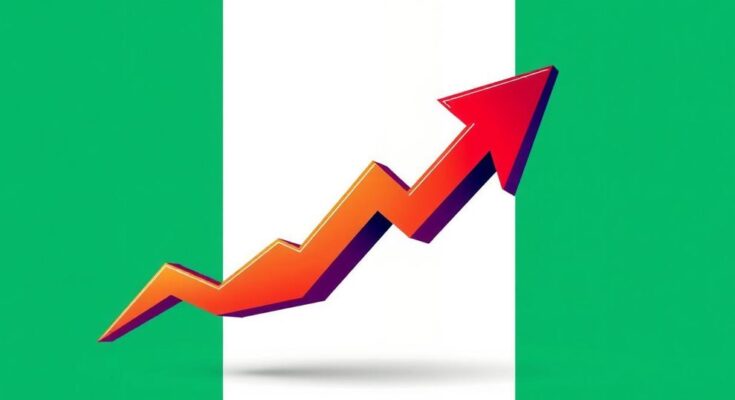Nigeria’s PMI rose to 53.7 in February 2025, signaling the fastest productivity growth in 14 months. Enhanced output, new orders, and purchasing activity reflected improved business conditions, supported by stable exchange rates and moderated inflation. The real GDP growth reached 3.84% in Q4 2024, driven primarily by the services sector, indicating a positive trajectory for the non-oil sector in 2025.
In February 2025, Nigeria’s productivity notably advanced, marking the fastest growth in 14 months, as highlighted in the Stanbic IBTC Bank’s Purchasing Manager’s Index (PMI) report. The PMI headline increased from 52.0 in January to 53.7 in February, indicating a significant monthly improvement in business conditions, the most pronounced since January 2024. This positive trend reflects an enhanced momentum within the Nigerian private sector, driven by rising output, new orders, and increased purchasing activity, alongside stabilizing inflationary pressures.
The report indicated that Nigerian companies ramped up output due to stronger customer demand and greater sales, thereby extending a growth trajectory to three consecutive months. Each of the four monitored sectors, including agriculture, manufacturing, services, and wholesale and retail, witnessed a rise in activity, although the growth in wholesale and retail was modest.
Moreover, new orders surged at the fastest rate in over a year as customers showed greater willingness to undertake new projects. This growth coincided with moderating inflationary pressures; while input costs rose at the slowest pace in ten months, persistent inflation remained due to rising raw material costs and elevated staff expenses.
Mr. Muyiwa Oni, Head of Equity Research West Africa at Stanbic IBTC Bank, noted that Nigeria’s private sector showed consistent improvement over the third month. He attributed this growth to a relatively stable exchange rate and moderated fuel prices, which alleviated inflation and boosted consumer demand. New orders increased for the fourth straight month, alongside a sharp rise in output as indicated by the output index, which reached 56.9 from 53.7 in January.
Input price inflation also showed a decline to the lowest level since April 2024, although a significant percentage of respondents increased their output prices. In Q4 2024, Nigeria’s real GDP growth improved to 3.84% from 3.46% in Q3 2024, marking the highest growth rate since Q4 2021. The services sector contributed substantially to GDP growth, accounting for 79.0%, with agriculture and industries following with contributions of 11.9% and 9.0%, respectively.
Looking forward, the non-oil sector is expected to continue its upward trajectory in 2025, bolstered by persistent foreign exchange stability and enhanced liquidity. This trend, along with anticipated reductions in borrowing costs, is likely to further support growth across various sectors, including manufacturing and trade.
In summary, Nigeria’s economy showed promising signs of recovery in February 2025, registering a robust increase in productivity and business activity, as indicated by the elevated PMI figures. Key sectors displayed significant growth fueled by enhanced customer demand and moderated inflation. The outlook for the non-oil sector remains positive, with expectations of consistent growth backed by favorable economic conditions, setting the stage for sustained economic development moving into 2025.
Original Source: www.thisdaylive.com




